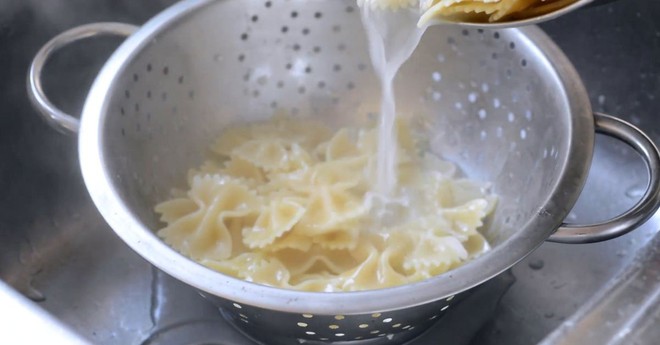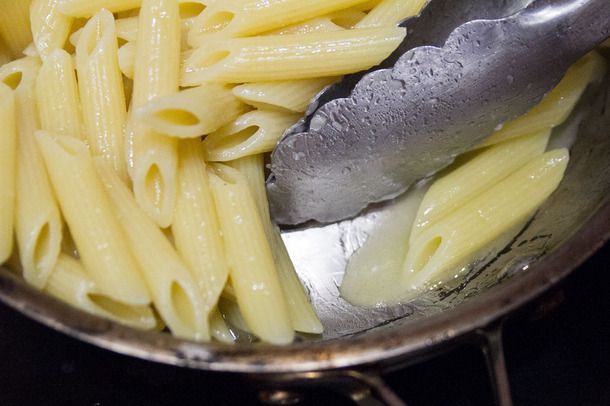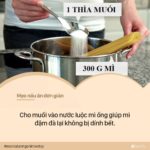Although there are numerous techniques for boiling noodles to achieve optimal results, there is a common practice that most people follow. This involves pouring the boiled noodles and water into a strainer placed in a sink, allowing the excess water to drain out. However, if you have been using this method for an extended period, it may be time to consider an alternative approach.

If you are still pouring out the noodle water, it is time to break that habit. (Photo: shared)
According to culinary experts and chefs, the water used to cook noodles is often overlooked but highly valuable. Referred to as “liquid gold” by Bon Appétit, this water holds immense benefits and is essential for creating tasty noodles. Many people unknowingly discard this valuable resource, missing out on the secret to flavorful and delicious pasta dishes.
Did you know that adding seasoning can greatly enhance the flavor of your noodle sauce? If you’re still unsure, allow me to provide an explanation.
While boiling noodles, the starch from the flour dissolves into the water, giving the noodle water a cloudy appearance. Many believe that this water is to be discarded and not utilized further. However, this water is a valuable resource known as “liquid gold” as it plays a crucial role in creating a smooth sauce and achieving a perfect balance of ingredients. Experts refer to this phenomenon as the emulsification process.

When boiling noodles, the starch from the flour dissolves into the water, resulting in the noodle water becoming cloudy. (Photo: shared)
The emulsification process is crucial in the preparation of Italian pasta for several reasons. Firstly, it plays a significant role in ensuring that the sauce maintains its desired consistency, by effectively combining the water and oil components and preventing them from separating. Additionally, this process eliminates the need for common thickening agents like flour, cornstarch, or cream, which can alter the flavor profile of the sauce if used excessively. Instead, a small amount of noodle water is added, creating a naturally thickened sauce that still maintains its original taste.

To adopt a more preferable method, avoid discarding the noodle water and instead utilize chopsticks or tongs to delicately lift the noodles out from the water. (Image: shared)
Renowned chefs like Jamie Oliver have successfully employed this technique to craft a delectable array of authentic Italian pasta delicacies. Hence, refrain from simply discarding the pasta water. Instead, utilize chopsticks or tongs to delicately extract the noodles from the water, preserving the vital flavors. Capitalize on the residual essence by incorporating it into the sauce, making a truly remarkable difference. Bear in mind, however, to exercise restraint when boiling the noodles, using approximately 3 liters of water for every 250g of pasta.
(Source: shared)


































